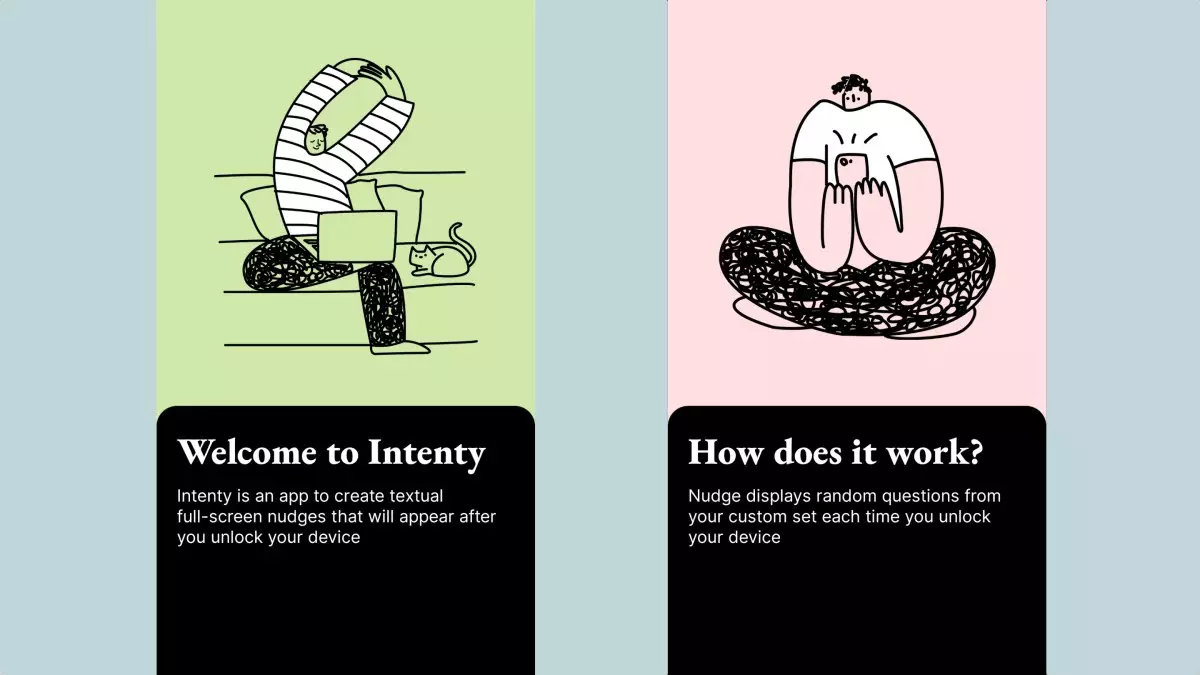In a world dominated by digital distractions, developing intentional phone usage is a challenging yet essential endeavor. Smartphone manufacturers and social media platforms recognize this issue and have incorporated usage timers, reminders, and various controls into their applications. However, the phenomenon of mindlessly unlocking our phones and getting lost in an endless scroll often persists. To combat this widespread problem, Yaroslav Neznaradko, a developer from Ukraine, created an innovative Android app called *Intenty*. This article examines the journey of *Intenty*, its functionality, and the potential for fostering mindful technology use.
The inception of *Intenty* traces back to Neznaradko’s personal struggle with excessive phone usage. Back in 2019, he realized that he was compulsively checking his phone, whether it was for emails, social media updates, or the latest news. Despite his attempts to limit screen time through various methods—including screen time limits and app blockers—he found these solutions more frustrating than effective. This prompted him to think critically about the habits that surrounded phone use.
In a bid to address his compulsive behavior, Neznaradko began to assess his intentions each time he reached for his device. Initially, he recorded his intentions in a notebook, which surprisingly proved effective in curbing mindless unlocking. This personal experiment served as the bedrock for his app concept, which emphasizes the need to articulate the purpose of phone usage.
The journey of *Intenty* was marked by several transformations. Neznaradko released an initial version in 2020, which focused solely on prompting users with a single question each time they unlocked their phone. While innovative, this version was limited, and the project’s momentum slowed as it faced the constraints of developing on the iOS platform.
In 2023, the app underwent a significant rebranding and redesign. With the emergence of advancements in AI, Neznaradko sought inspiration from platforms like ChatGPT, incorporating a chat-style interface to query users about their intentions. Nonetheless, this approach failed to resonate with users as intended. Recognizing the need for a fresh approach, Neznaradko delved into the disciplines of human-computer interaction and released a revamped version of *Intenty* this summer, which expanded its functionality.
The redesigned *Intenty* brings a plethora of customizable nudges, urging users to interact with their device intentionally. The app categorizes nudges into five distinct themes: Intention, Necessity, Grounding, Posture, and Minimalism, allowing users to choose prompts that resonate with their personal objectives. This tailored approach recognizes that different users have varying reasons for engaging with their phones and promotes a more meaningful interaction.
In addition to customizing nudges, users have the option to bypass the nudge screen momentarily, although doing so undermines the app’s primary purpose. A cooldown feature further enhances user experience, preventing immediate nudges after locking the phone—particularly useful when waiting for important replies. The ability to adjust the frequency of nudge pop-ups—from every second to every tenth unlock—adds an additional layer of flexibility for users striving to manage their phone habits.
While *Intenty* remains free for basic use, it offers a subscription model priced at $1.99 per month. Subscribers can unlock premium features such as scheduling nudges, a ‘hard mode’ that requires users to enter a reason for unlocking, and a specialized lock function directly accessible from the nudge screen. This model not only provides enhanced functionality but also encourages deeper engagement with mindful usage.
Feedback from the user community has been pivotal in guiding the development of *Intenty*. After Neznaradko shared updates on platforms like Hacker News, many users expressed their views on the app’s functionality and how the nudges could become intrusive. The challenge remains to develop an algorithm that not only recognizes patterns in user behavior but also respects the need for quick actions—like taking a photograph—without unnecessary interruption.
Looking ahead, Neznaradko envisions expanding the capabilities of *Intenty*, including features like pop-up reminders for extended phone usage and refreshing nudge content to combat user fatigue. Additionally, incorporating multimedia nudges—such as images or videos—could further enrich the user experience, making the process of mindful engagement with technology more engaging.
The development of *Intenty* underscores the importance of fostering intentional phone usage in an era where distractions abound. Through continuous iteration and user feedback, Yaroslav Neznaradko is not just offering a tool for managing phone habits but is nurturing a broader conversation about mindfulness in the digital age. The evolution of this app reflects a growing recognition of the need for intentionality in our interactions with technology, supporting users in navigating their relationship with devices more thoughtfully.

